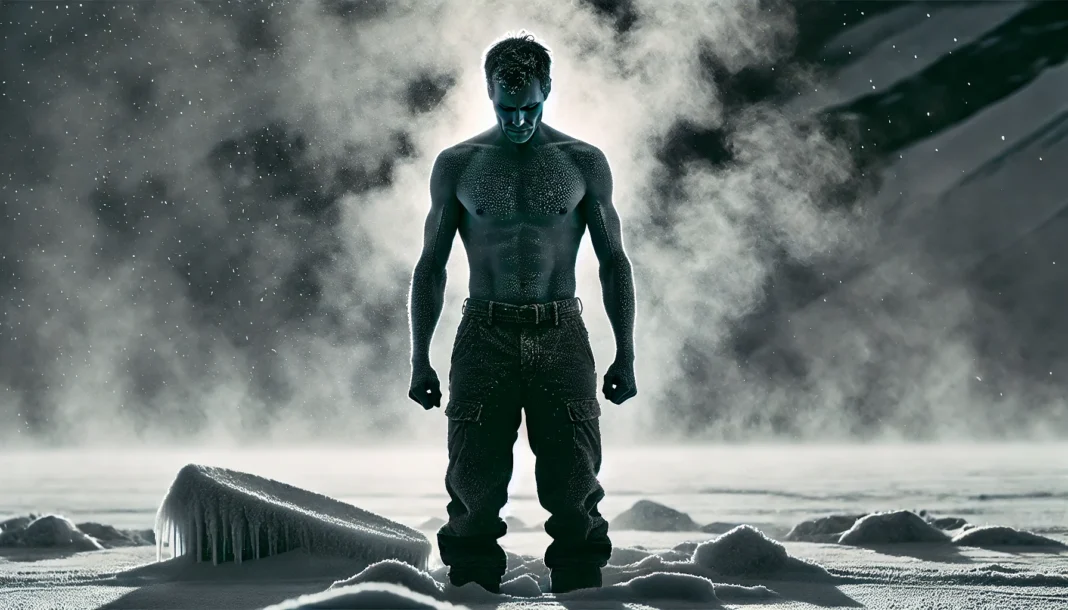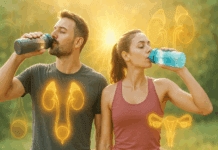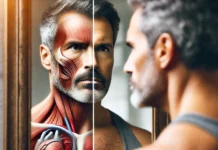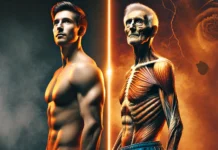Understanding Testosterone and Its Role in Male Health
Testosterone is the primary male sex hormone, playing a crucial role in various bodily functions. It is responsible for regulating muscle mass, bone density, fat distribution, red blood cell production, and libido. While testosterone levels naturally decline with age, many men seek ways to optimize their hormone levels through diet, exercise, supplementation, and lifestyle changes. Among the many strategies proposed, cold exposure—specifically cold showers and ice baths—has gained attention for its potential to increase testosterone levels and improve overall health.
You may also like: How to Increase Testosterone Levels Naturally: Science-Backed Strategies for Men’s Health & Longevity
The question of whether cold showers increase testosterone has been debated among health enthusiasts and scientists alike. While some anecdotal evidence suggests that cold exposure may boost testosterone, scientific research on the topic is still limited. However, understanding how temperature influences hormone regulation, circulation, and stress responses can provide valuable insights into whether cold showers and ice baths genuinely affect testosterone production.

The Science Behind Cold Exposure and Hormonal Health
Cold exposure has long been associated with numerous health benefits, including improved circulation, enhanced immune function, and increased metabolic activity. The human body responds to cold temperatures by activating thermogenesis—a process that generates heat to maintain a stable internal temperature. This adaptation involves hormonal shifts that may influence testosterone production and overall endocrine function.
One of the primary ways cold exposure affects hormones is through the activation of the sympathetic nervous system. When the body encounters cold water, it triggers the release of norepinephrine, a stress hormone that plays a role in energy metabolism and mood regulation. Some studies suggest that norepinephrine release can indirectly support testosterone production by reducing cortisol levels. Since cortisol and testosterone have an inverse relationship—meaning high cortisol levels can suppress testosterone—lowering stress through controlled cold exposure might contribute to an optimal hormonal balance.
Additionally, cold showers and ice baths may impact the hypothalamic-pituitary-gonadal (HPG) axis, which regulates testosterone production. The HPG axis controls the release of luteinizing hormone (LH), a key hormone that stimulates testosterone synthesis in the testes. Some animal studies suggest that exposure to cold temperatures can lead to temporary increases in LH levels, which may subsequently boost testosterone production. However, more human-based studies are needed to confirm this effect conclusively.
Cold Showers and Testosterone: Myth or Reality?
One of the main claims surrounding cold showers and testosterone is that exposure to cold water can stimulate testicular function. The testes are highly sensitive to temperature changes, and their optimal functioning requires a temperature slightly lower than the body’s core temperature. This is why the scrotum naturally contracts or relaxes to regulate temperature.
Some proponents argue that prolonged exposure to high temperatures—such as hot showers, saunas, and tight clothing—can impair testicular function and reduce testosterone levels. By contrast, cold showers may help maintain or even enhance testicular function by preventing excessive heat buildup. This perspective is supported by research showing that prolonged heat exposure, such as frequent sauna use or high-temperature working environments, can negatively impact sperm quality and testosterone production. However, while avoiding excessive heat is beneficial for testicular health, there is limited direct evidence proving that cold showers actively increase testosterone.
Another argument in favor of cold showers for testosterone optimization is their ability to improve circulation. Cold exposure causes blood vessels to constrict (vasoconstriction) and then dilate (vasodilation) once the body rewarms. This process enhances oxygen and nutrient delivery to various organs, including the testes. Improved blood flow may support testicular function and overall hormonal balance, potentially benefiting testosterone levels.
Do Ice Baths Increase Testosterone?
Ice baths, a more extreme form of cold exposure, have been widely used by athletes for muscle recovery and inflammation reduction. Some advocates believe that ice baths can also enhance testosterone levels by triggering a hormetic response—a physiological adaptation to mild stress that strengthens the body over time.
One study conducted on athletes found that exposure to cold water immersion post-exercise helped maintain hormonal balance and reduced markers of muscle damage. While the study did not directly measure testosterone changes, the preservation of anabolic (muscle-building) hormones suggests that ice baths may indirectly support testosterone levels by reducing stress and inflammation.
Additionally, cold plunges may enhance sleep quality, a critical factor in maintaining healthy testosterone levels. Poor sleep is strongly linked to reduced testosterone production, as most of the body’s testosterone is released during deep sleep cycles. If ice baths contribute to better sleep by promoting relaxation and reducing muscle soreness, they may play an indirect role in optimizing testosterone levels.
Does Hot Water Affect Testosterone?
While cold showers and ice baths are often touted for their potential benefits, some men wonder whether hot water has the opposite effect. Research suggests that prolonged exposure to high temperatures can impair testicular function and reduce testosterone levels. For example, studies on sauna use indicate that excessive heat exposure can lead to temporary declines in sperm production and hormonal imbalances.
However, moderate exposure to hot water—such as a warm bath or shower—may not necessarily have a detrimental effect on testosterone levels. In fact, warm water can promote relaxation, reduce stress, and improve circulation, which are all beneficial for overall health. The key is to avoid excessive heat exposure, particularly for extended periods, as this may interfere with testicular function.
Practical Takeaways: How to Use Cold Exposure for Hormonal Health
While the direct link between cold showers and increased testosterone remains inconclusive, cold exposure offers numerous health benefits that can indirectly support hormone balance. Here are some practical tips for incorporating cold exposure into your routine:
- Start Gradually: If you’re new to cold showers, begin with lukewarm water and gradually decrease the temperature over time. This approach helps your body acclimate to the cold without excessive discomfort.
- Limit Exposure Time: Cold showers and ice baths should be brief—typically between 2 to 5 minutes. Excessive exposure may lead to stress rather than benefit hormone levels.
- Use Cold Showers Post-Workout: Some studies suggest that cold exposure after exercise can aid recovery and reduce muscle soreness, potentially supporting anabolic hormone function.
- Avoid Excessive Heat: While occasional hot showers or saunas are not harmful, excessive heat exposure should be minimized to protect testicular function and hormonal balance.
- Focus on Overall Lifestyle Factors: Testosterone levels are influenced by multiple factors, including diet, exercise, sleep, and stress management. A holistic approach to hormone health will yield better results than relying solely on cold exposure.
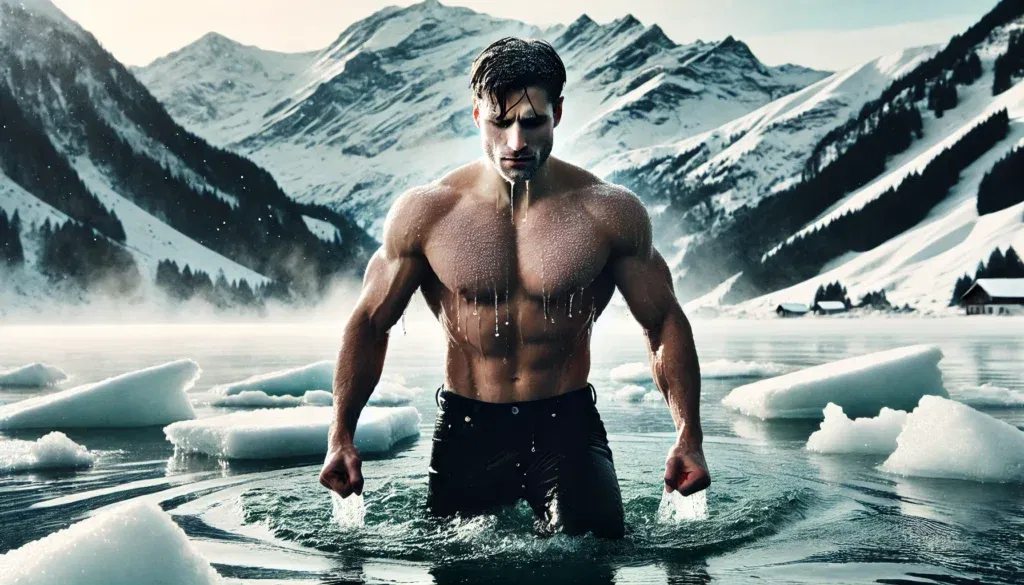
Frequently Asked Questions (FAQ) on Cold Showers and Testosterone
1. Do cold showers increase testosterone levels significantly?
Cold showers have been linked to potential testosterone boosts, but the effect is not as dramatic as some might expect. While exposure to cold water can stimulate the body’s natural response mechanisms, including increased circulation and hormone release, scientific studies suggest that the rise in testosterone may be temporary. Cold showers for testosterone enhancement may work best when combined with other lifestyle factors such as strength training, proper sleep, and a nutrient-rich diet. Rather than relying solely on cold showers, individuals should adopt a comprehensive approach to hormone optimization. Although cold showers boost testosterone temporarily, long-term benefits require consistent health practices.
2. How does cold exposure affect testosterone production?
Cold exposure, including cold showers and ice baths, influences testosterone production by activating the body’s stress response. Short-term stress from cold plunges can trigger the release of norepinephrine, which plays a role in hormone regulation. Additionally, cold plunge testosterone benefits may stem from improved circulation and reduced inflammation, both of which support overall endocrine function. However, prolonged or excessive cold exposure can increase cortisol, which may negatively affect testosterone levels. Therefore, strategic use of cold exposure—such as brief cold showers or occasional ice baths—may be beneficial without overstimulating stress responses.
3. Does water increase testosterone levels in general?
Hydration is essential for maintaining optimal hormone levels, including testosterone. Dehydration can lead to increased cortisol levels, which negatively impacts testosterone production. So, does water boost testosterone directly? While drinking water does not directly cause a surge in testosterone, staying properly hydrated supports metabolic functions that contribute to hormone balance. Additionally, does drinking water increase testosterone? Indirectly, yes—because adequate hydration supports kidney function, detoxification, and optimal blood flow, all of which help maintain testosterone production.
4. Can ice baths improve testosterone levels better than cold showers?
Ice baths provide more intense cold exposure than cold showers, which may enhance their impact on hormone regulation. Some studies suggest that short-term exposure to extreme cold can stimulate testosterone production more effectively than mild cold exposure. Do ice baths increase testosterone more significantly than showers? Possibly, but the overall effect still depends on factors such as duration, frequency, and individual physiology. Those using cold plunge testosterone techniques should be mindful of their body’s response to avoid excessive stress that could counteract the benefits.
5. What is the optimal duration for a cold shower to boost testosterone?
To maximize potential testosterone benefits, cold showers should last between two to five minutes. Staying in freezing water for too long may increase stress hormones like cortisol, which can counteract testosterone benefits. Instead, brief yet regular cold showers for testosterone enhancement can be more effective. Starting with 30-second bursts and gradually increasing exposure time can help the body adapt to the cold while minimizing negative effects. Consistency is key, as occasional cold showers may not provide lasting hormonal benefits.
6. Does hot water increase testosterone levels?
Unlike cold water, hot water exposure is not associated with an increase in testosterone. In fact, prolonged exposure to hot temperatures—such as hot baths or saunas—may temporarily reduce sperm production and testosterone levels. Does drinking hot water increase testosterone? There is no evidence to suggest that hot water consumption has a direct impact on testosterone levels. However, warm water can support digestion and overall health, which indirectly benefits hormone balance.
7. What are the long-term benefits of cold plunges for testosterone?
Regular cold plunges may contribute to improved testosterone levels over time, but they should be combined with other healthy habits. Cold plunge testosterone benefits include improved circulation, reduced muscle inflammation, and enhanced recovery from exercise. Additionally, does cold plunge increase testosterone permanently? Not necessarily—while short-term boosts may occur, maintaining high testosterone levels requires a holistic approach that includes diet, exercise, and stress management. Using cold exposure strategically as part of a balanced lifestyle is the best way to maximize its effects.
8. Is there a risk of lowering testosterone by taking too many cold showers?
Excessive cold exposure can increase stress and raise cortisol levels, which may counteract the benefits of cold showers for testosterone. It is essential to listen to the body’s response and avoid overdoing it. Cold showers boost testosterone most effectively when used in moderation—around 2-4 times per week. If taken too frequently or for extended durations, the body’s adaptive response may shift from hormonal stimulation to stress-induced suppression. Therefore, balance is key when incorporating cold showers into a routine.
9. How does hydration influence testosterone compared to cold exposure?
While both hydration and cold exposure play roles in hormone balance, they impact testosterone differently. Does water increase testosterone levels? Indirectly, yes—proper hydration supports metabolic processes and reduces cortisol, which helps maintain healthy testosterone levels. On the other hand, cold showers for testosterone work by triggering the body’s response to environmental stress. The combination of both—staying well-hydrated and incorporating occasional cold exposure—can create an optimal environment for testosterone production.
10. Can combining cold showers with exercise enhance testosterone levels further?
Yes, pairing cold showers with resistance training or high-intensity exercise can create a synergistic effect on testosterone levels. Strength training naturally increases testosterone, and using cold showers post-workout may help with recovery while also stimulating additional hormonal responses. Do cold showers increase testosterone more effectively when combined with fitness routines? While the research is still developing, anecdotal evidence suggests that using cold exposure strategically—such as after heavy lifting or endurance workouts—may amplify its benefits. However, timing matters, as taking a cold shower immediately after weight training may blunt muscle-building adaptations. It’s best to wait at least 30-60 minutes after a workout before exposing the body to cold water.
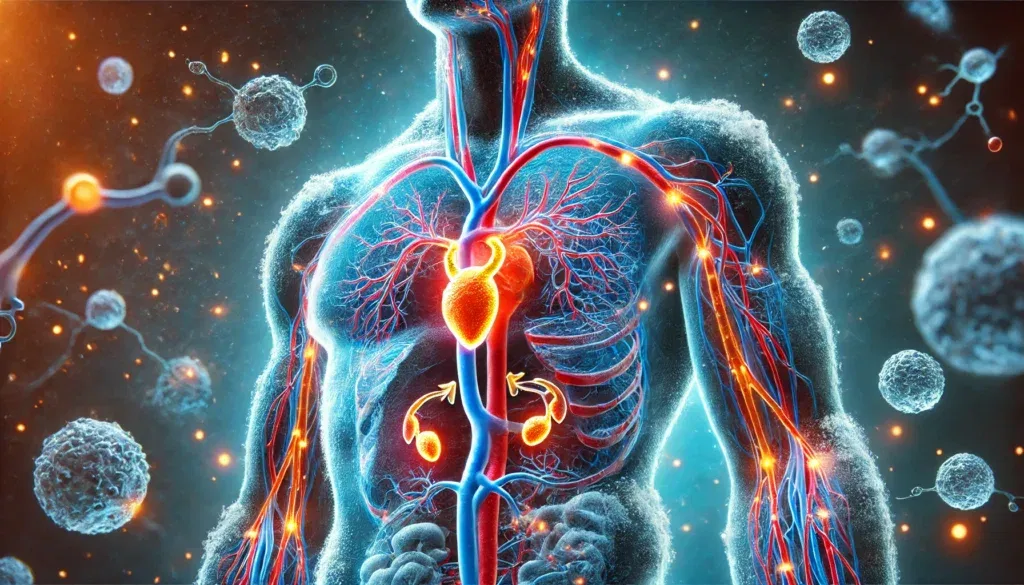
The Verdict: Can Cold Showers Boost Testosterone?
The idea that cold showers can significantly increase testosterone is still largely anecdotal, with limited scientific evidence directly supporting the claim. However, cold exposure does offer several physiological benefits, such as improved circulation, reduced stress, and enhanced recovery, which may contribute to overall hormonal balance. While cold showers alone are unlikely to cause a dramatic surge in testosterone, they can be a useful addition to a healthy lifestyle that supports optimal hormone levels.
Ultimately, maintaining high testosterone levels requires a comprehensive approach that includes proper nutrition, resistance training, quality sleep, and stress reduction. Cold showers and ice baths can complement these strategies, but they should not be relied upon as a primary method for testosterone enhancement. More research is needed to determine the exact mechanisms through which cold exposure influences hormone production, but in the meantime, incorporating cold showers into your routine may still offer a range of health benefits beyond just testosterone optimization.
testosterone production support, cold exposure benefits, ice bath recovery, hormone health optimization, thermogenesis and testosterone, cold therapy for men, testosterone-boosting strategies, muscle recovery methods, stress reduction techniques, circadian rhythm and hormones, sleep quality improvement, cold water immersion science, vasodilation and hormone balance, sauna vs cold plunge, athletic performance and testosterone, metabolic health strategies, cortisol reduction benefits, natural testosterone enhancement, endocrine system regulation, fitness and hormonal balance
Further Reading:
Do Cold Showers Increase Testosterone?
Effects of physical exercise and cold stimulation on serum testosterone level in men
Disclaimer: The information provided in this article is for general informational purposes only. The content does not constitute professional advice of any kind, including but not limited to medical, legal, or financial advice. HisHealthMag and its contributors make no representations or warranties regarding the accuracy, completeness, or reliability of the information presented. Always seek the advice of a qualified professional for any specific concerns or questions you may have. Neither HisHealthMag nor its authors assume any responsibility or liability for any actions taken based on the information provided in this article. The views and opinions expressed are those of the author(s) and do not necessarily reflect the official policy or position of HisHealthMag.


